Date palm: definition, how to grow it, diseases, care for it
Introduction to the date palm
There is nothing quite like the strong and commanding presence of the date palm. At the top of the tree, a regal crown is created by its arching, waxy grey-green fronds.
Typically, in spring, clusters of light yellow flowers appear and give way to dates, which are oblong, edible fruits that are green when young but usually turn brown when ripe.
- Dates are a good source of fiber, containing 7 grams per 100 grams.
- Dates contain essential minerals such as potassium, magnesium and copper.
- Dates are a good source of natural sugars, providing a quick energy boost.
- Dates are a natural laxative and can help relieve constipation.
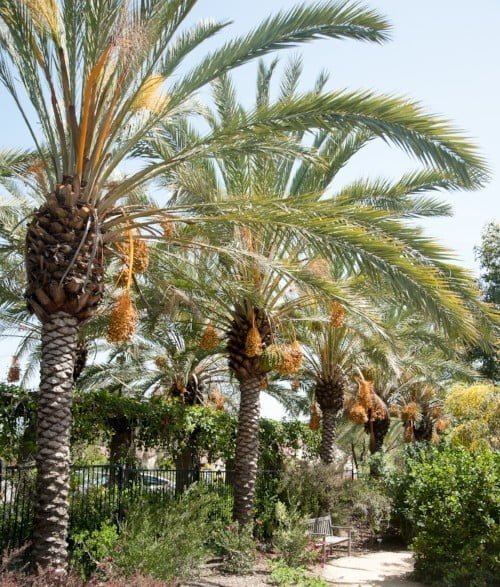
Basic care guide
The most important types
- Deglet Nour: A golden-colored fruit with a honey-like flavour
- “Al-Dayri”: This variety produces long fruits. It is known to change color from red to brown to black as it matures.
- “Al-Barhi”: This variety produces hard and delicious fruit
- “Al-Fard”: This variety grows the fruit that we typically associate with common dates and has a dark brown exterior
- Original home
The Italian scientist Eduardo Beccari claims that the original homeland of the date palm is the Arabian Gulf, while the scientist De Candol says that “the date palm originated since prehistoric times in the hot, semi-arid region that extends from (Senegal) to the (Andalusia) basin.”
- Nickname
The fruit's English name comes from the Greek word meaning "finger," due to the fruit's elongated shape. That's why it's called date palm
- Platoon : Arecaceae
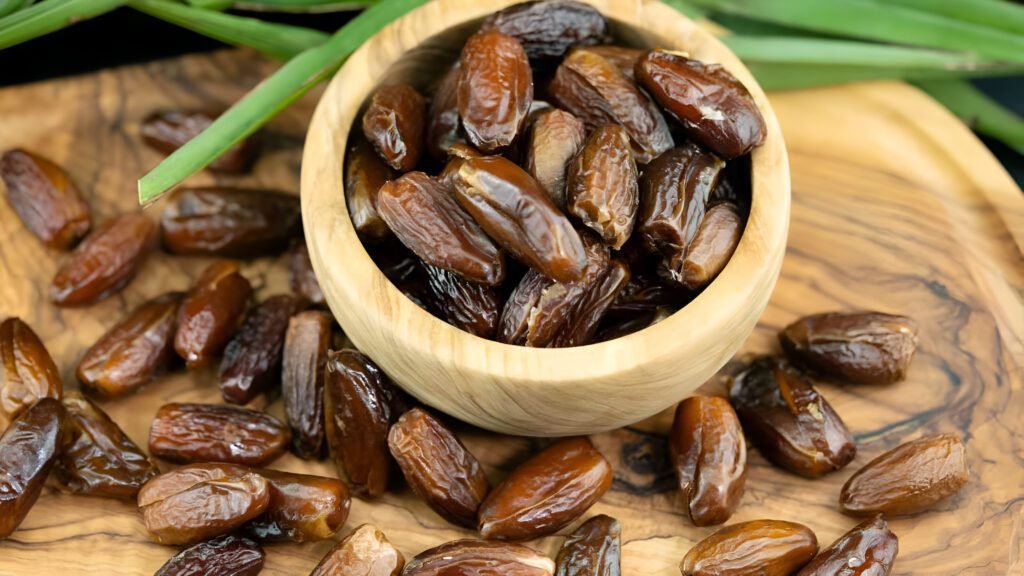
The amount of water needed
It does not require watering once established. In general, trees need supplemental irrigation to become established, especially if planted after the rainy season.
- During the first year, it is irrigated with 20-25 liters of water twice a week.
- During its second year, the tree needs 40 liters of irrigation once a week.
Suitable living conditions
It grows in arid regions, and thrives in high temperatures and low humidity.
- It does not tolerate frost. They can suffer harm or even death if exposed to freezing conditions.
- Fruiting stage
It begins to bear fruit at the age of 5 years. More than 1,000 dates may appear in a single bunch weighing 18 pounds or more. The average production of this fruit tree is 800-1,300 pounds of dates per tree per year
Suitable lighting for him:
- Temperatures
Temperatures between 80-95°F (27-35°C) are ideal for optimal growth.
- Suitable lighting for him
Palm trees need adequate sunlight to thrive. Place your plant in a location that receives at least 6-8 hours of direct sunlight each day. This will provide the energy needed for photosynthesis, allowing the palm to produce food and grow
- It can also tolerate some shade. However, long periods of insufficient light can lead to stunted growth and decreased fruit production.
The soil should be well-drained with a pH between 6.0 and 7.5.
- Sandy loam or loam soil with a good organic matter content is often the best choice for palm trees. These soil types provide a balance between moisture retention and drainage, allowing roots to access water and nutrients while avoiding waterlogged conditions.
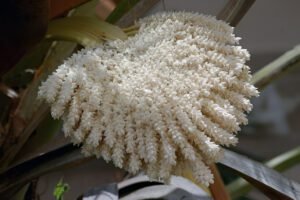
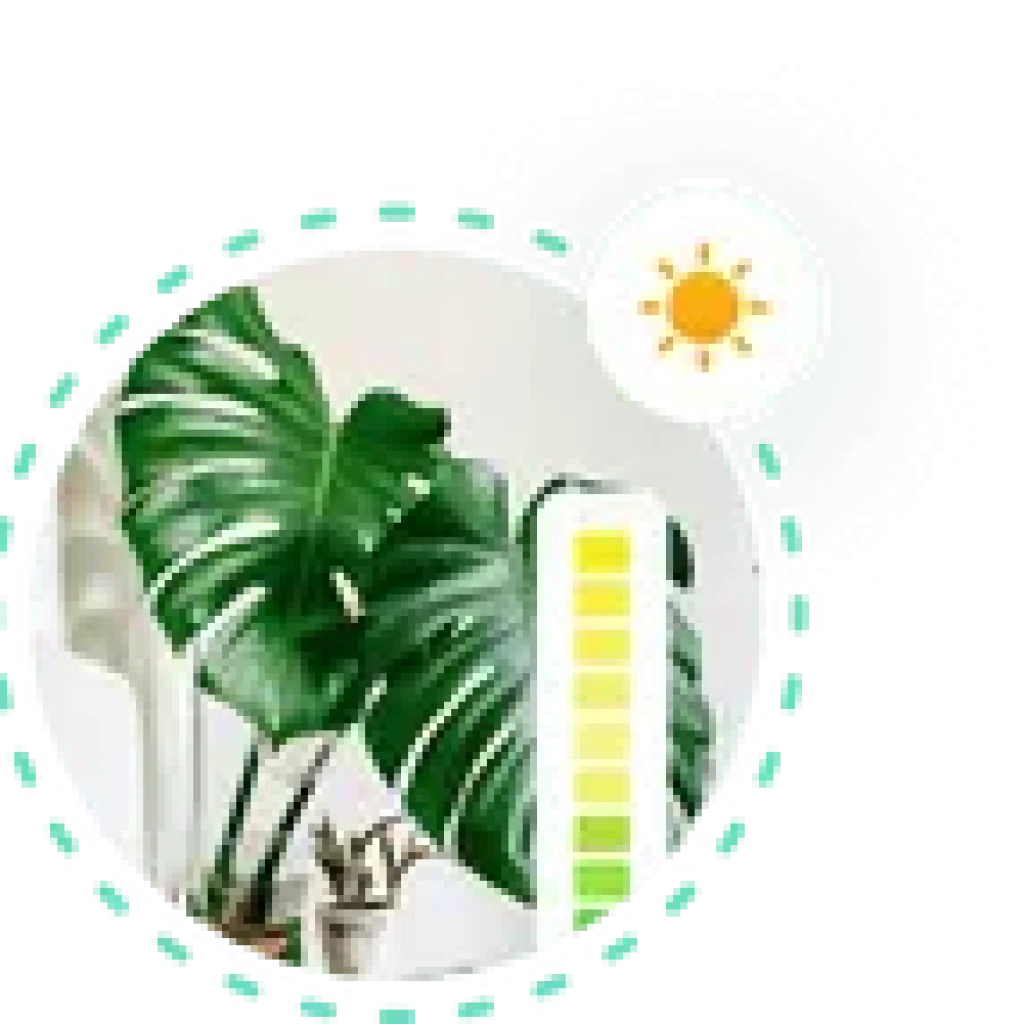
Find out what light your plants are actually getting.
Find the best locations for them to improve their health, simply using your phone.
Fertilization care
- The ideal palm fertilizer contains the right combination of NPK, magnesium and calcium.
- Fertilize your palms three times a year: spring, summer and fall.
- Fertilize completely around the plant, distributing the granules over the entire root zone (roughly the volume covered by the plant's midday shade).
- Do not fertilize in dry soil, as this may cause the plant to burn and die.
- Do not over-fertilize as this may cause injury to the plant.
- Do not throw granular fertilizers below the crown of the plant.
- Do not dump fertilizer on the plant's trunk in a large pile as this may cause necrosis or scaring the trunk.
How to plant seeds
- Make sure to choose healthy-looking, plump seeds that are not damaged.
- Before planting date palm seeds, it is helpful to soak them in warm water overnight. This process helps soften the seed coat and promote germination. Fill a bowl with warm water and place the seeds in it. Allow them to soak for at least 12 hours, making sure they are completely submerged. This step will give your seeds a head start on their journey toward germination.
- Choose a good potting mix that is rich in organic matter. (Combine equal parts peat moss, perlite and vermiculite) Fill the pot with potting mix, leaving enough room for the growing roots of the date palm seedlings
- To plant soaked date palm seeds. Make sure the container you use has drainage holes to prevent waterlogging.
- Remember, full sun and temperatures above 20 degrees Fahrenheit are necessary for planting.
- Don't forget about watering
- Germinating date palm seeds can be a slow process, requiring patience. It may take from several weeks to a few months for the seeds to germinate.
- During this waiting period, it is important to maintain ideal conditions.
- Once the date palm seeds have germinated and developed a few leaves from the seedlings, it is time to transplant them into larger beds or directly into the ground.
Pruning
- Prune your palms in June. The end of spring and beginning of summer is the best time to rid the date palm of old foliage
- Remove all old leaves, which are referred to as fronds. It is also recommended to remove some of the green fronds to reduce the amount of maintenance the tree may need, but do not remove too much, as this will reduce energy production
- Do not attempt to climb a date palm using a pair of spiked shoes when pruning as this will damage the tree trunk and allow insect infestation.
- Red palm weevil: Look for wilted leaves, holes in the trunk, or sawdust-like debris near the base of the plant to control these pests. Remove infected fronds, and use appropriate insecticides if necessary.
- Fusarium wilt is a devastating fungal disease that affects palm trees. Infected palm trees may exhibit yellowing or browning of the fronds, stunted growth, and general deterioration in health. Prune affected fronds and avoid over-watering or providing excessive nitrogen fertilizer, as these conditions can exacerbate the disease.
- Egg disease: Typical symptoms include yellowing of the lower fronds and rapid deterioration in health. Prevention is crucial, as there are no effective treatments once infection occurs. Purchase disease-free seedlings, practice good sanitation procedures, and avoid planting palms near infected areas
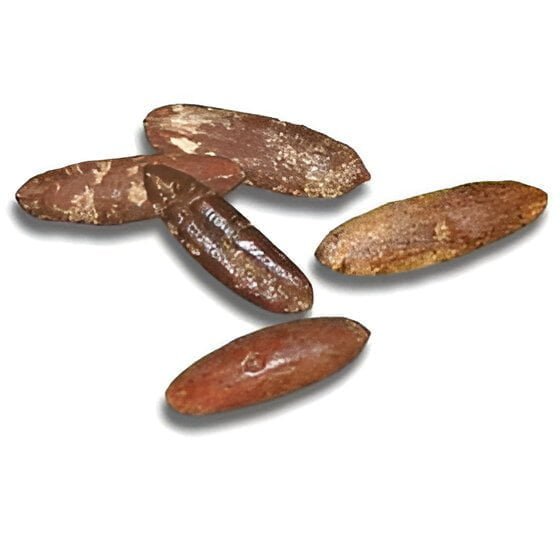
Suggested use
- The seeds are ground and used as feed
- Syrup, alcohol and vinegar are derived from the fruit
- When a palm tree is cut, the tender terminal shoot is eaten as a salad.
- As an ornamental tree along the seashore
Suitable planting time
In early spring or fall
additional information
- Plant age
More than 100 years
- Plant height
23 m (75 ft
- Flowering stage
Palm trees bloom in early spring



